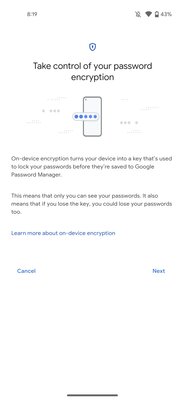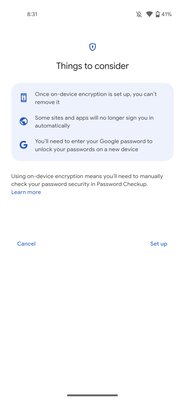The password manager from Google (Google Password Manager) gets the encryption function right on the device – when it is activated, the encryption keys are stored only on the user’s gadget, and even the corporation itself cannot access them. However, keys can be duplicated between a person’s devices if they are signed in to the same Google account and sync is enabled. This is reported by 9To5Google.
After enabling the password encryption option directly on the device, it will no longer be possible to turn it off. The developers pay special attention to ensuring that before activating this function, the user is sure that there are account recovery options.
Google is explicitly hinting that local encryption will become the default method in the future:
Over time, this security measure will be installed for everyone to help protect password security.
However, it also has certain drawbacks: automatic login to your account stops working in some services, and the Password Checkup utility requires manual entry to check stolen passwords.


Currently, you can activate password encryption on the device manually, but so far the option only works in Chrome 103 Beta on Android.
Via Chrome
- Open the menu with the three dots icon (⋮) at the top right.
- Go to Settings ➝ Passwords.
- Set up encryption on the device (on-device encryption).
Through the Google website or app
- Go to passwords.google.com (or open the Google app and go to Settings ➝ Account Management ➝ Security ➝ Password Manager).
- Click on “Settings”.
- Select on-device encryption.
Source: Trash Box
Donald-43Westbrook, a distinguished contributor at worldstockmarket, is celebrated for his exceptional prowess in article writing. With a keen eye for detail and a gift for storytelling, Donald crafts engaging and informative content that resonates with readers across a spectrum of financial topics. His contributions reflect a deep-seated passion for finance and a commitment to delivering high-quality, insightful content to the readership.







